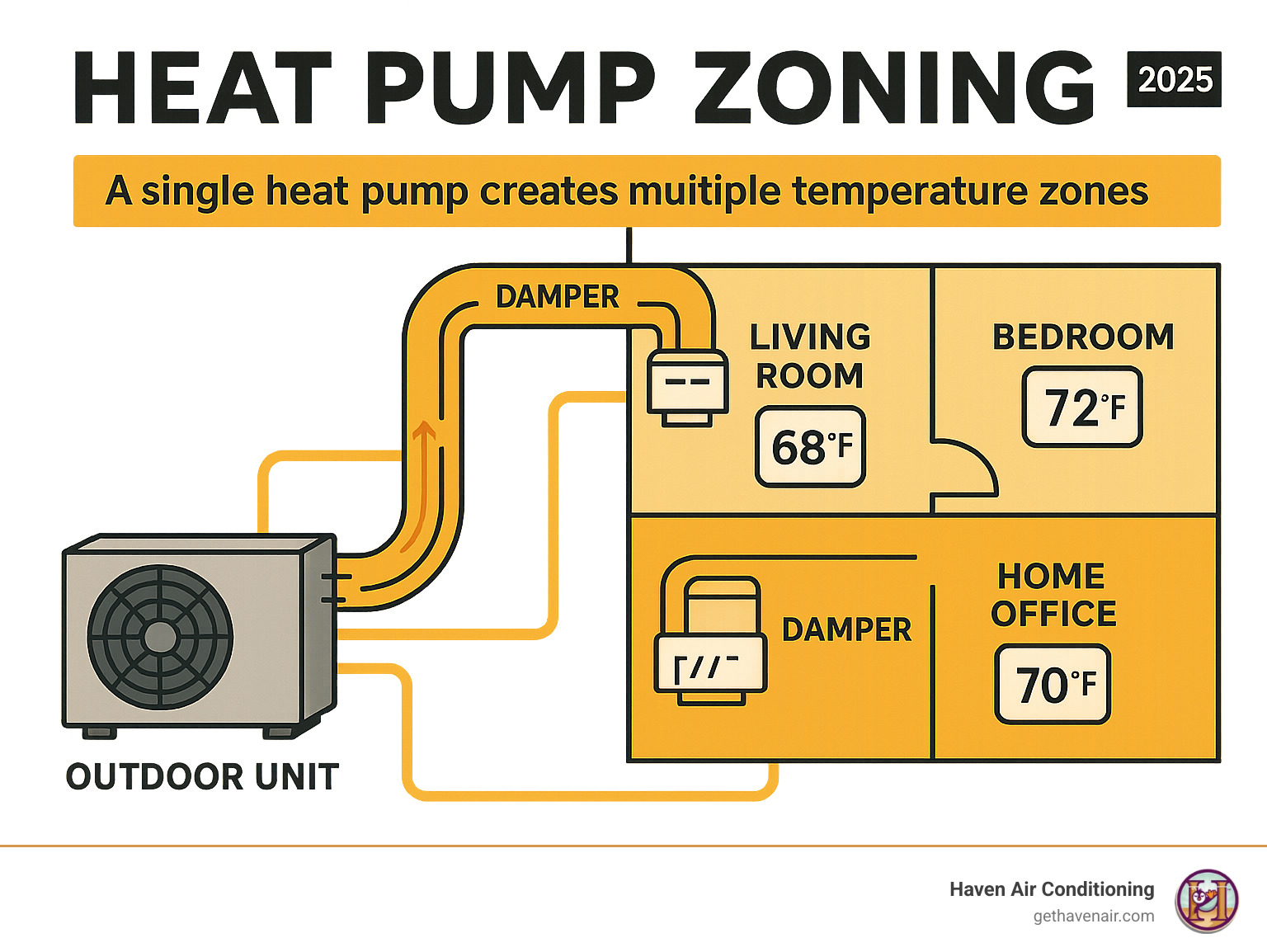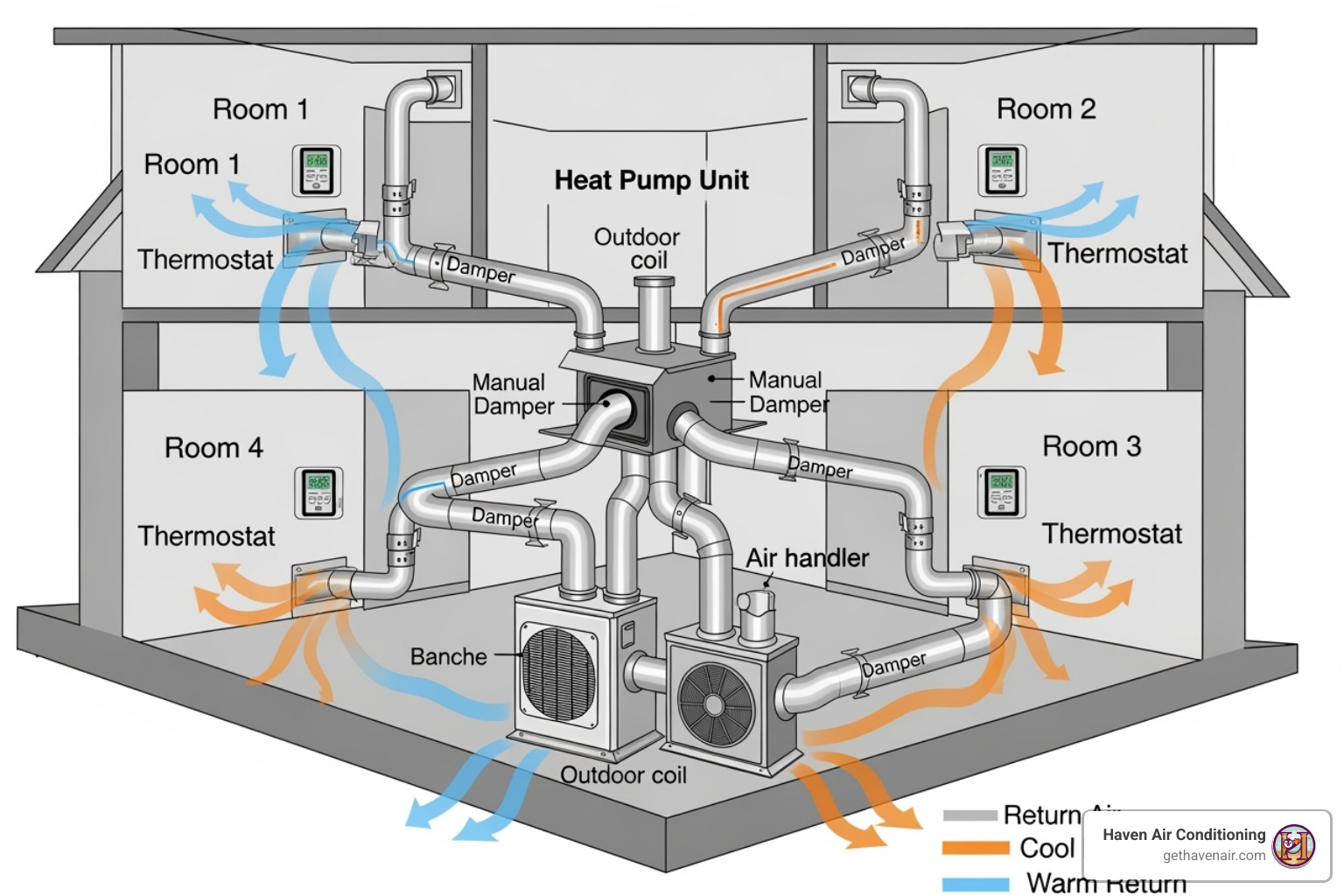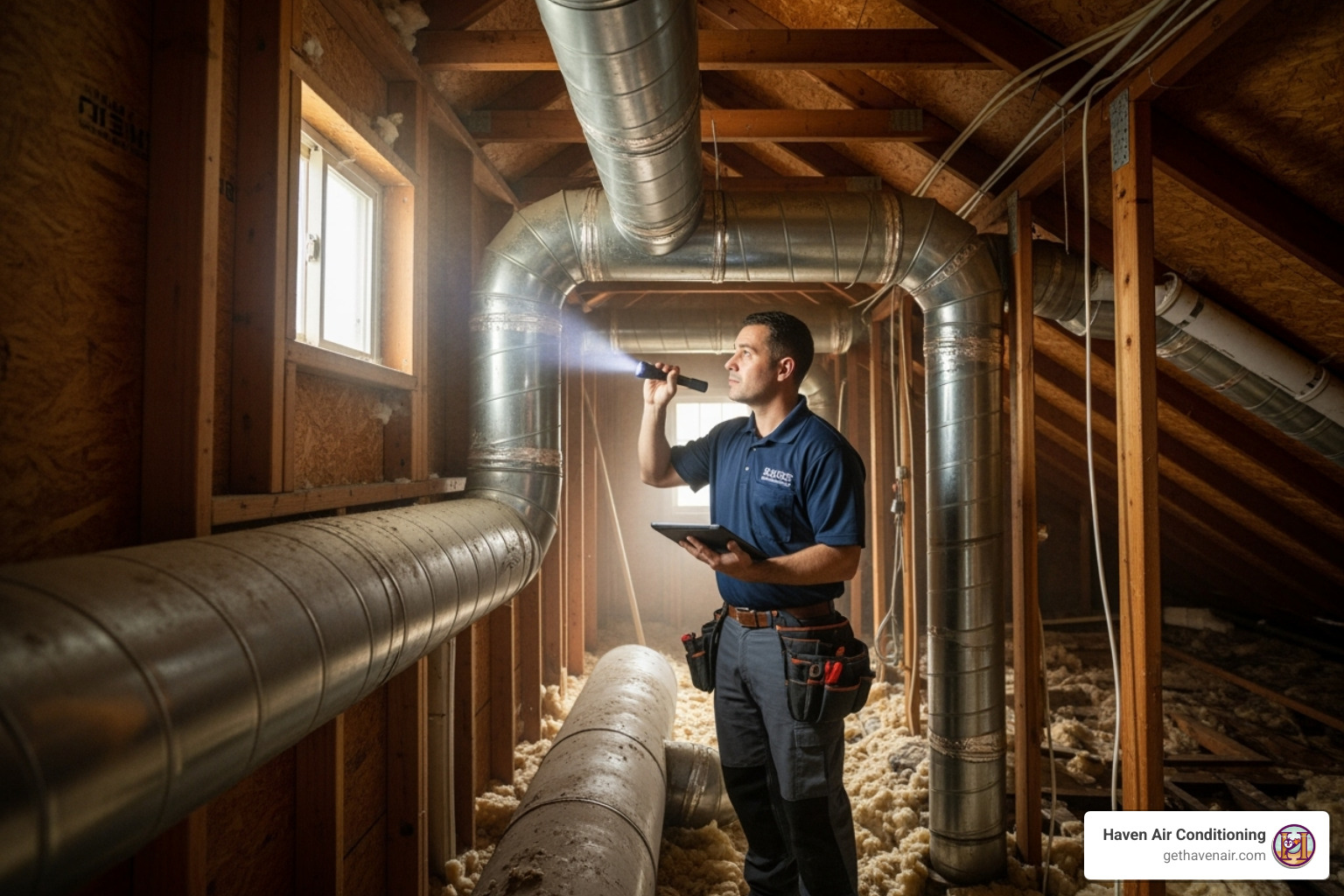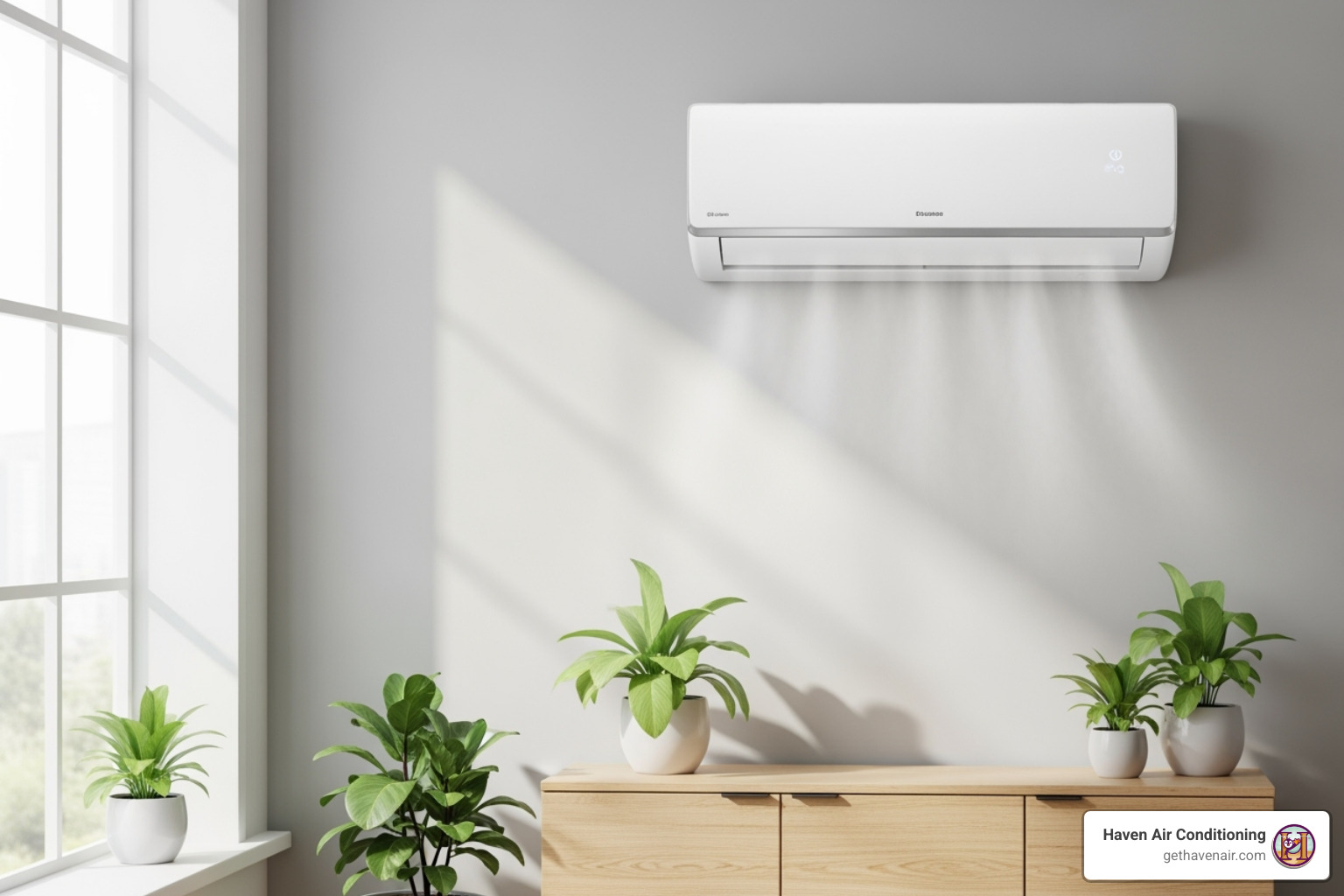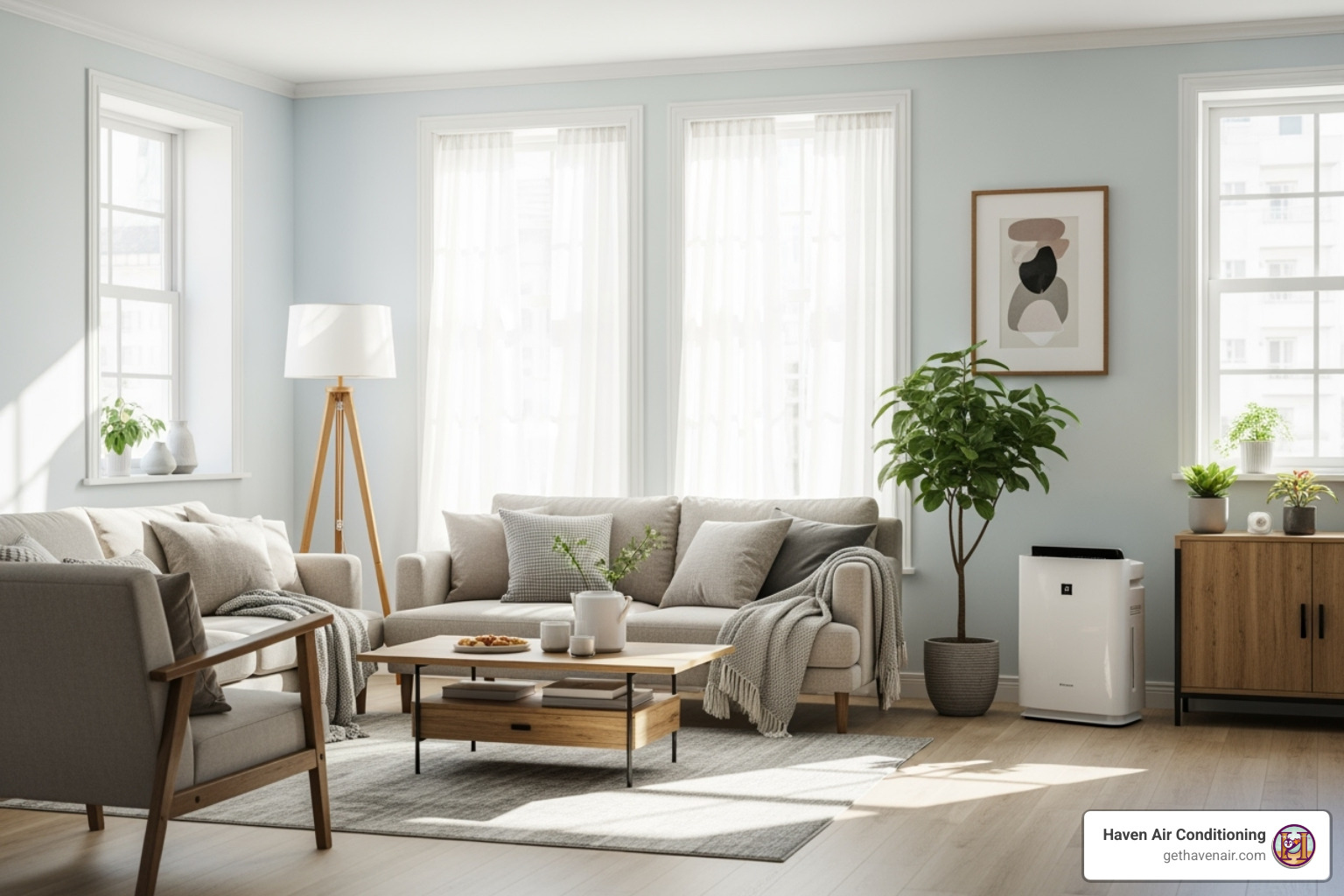Why Heat Pump Zoning is the Solution to Your Home’s Comfort Problems
Heat pump zoning is a smart HVAC technology that divides your home into separate temperature-controlled areas, allowing you to heat or cool specific rooms independently rather than treating your entire house as one zone.
Quick Answer for Heat Pump Zoning:
- What it is: A system that creates multiple temperature zones in your home using one heat pump
- How it works: Uses dampers in ductwork or individual units to control airflow to different areas
- Key benefit: Personalized comfort in each room while saving up to 30% on energy costs
- Best for: Multi-story homes, rooms with different sun exposure, or families with varying temperature preferences
If you’ve ever battled over the thermostat, you’re not alone. As one industry expert puts it: “Heat Pump Zoning is the game-changing solution for the age-old tug-of-war over household temperatures.”
Many Orange County homeowners face common comfort challenges:
- Hot and cold spots throughout the house
- Thermostat wars between family members
- Wasted energy heating or cooling unused rooms
- Inefficient temperature control in multi-story homes
These issues stem from traditional HVAC systems that treat your entire home as a single zone, forcing every room to the same temperature regardless of usage, sun exposure, or individual preferences.
Heat pump zoning eliminates these problems by giving you precise control over each area of your home. Whether you want to keep your home office cooler during work hours or warm just the bedrooms at night, zoning makes it possible.
What is Heat Pump Zoning and How Does It Work?
Instead of one thermostat controlling your entire home, heat pump zoning gives each area its own voice in the temperature conversation. It’s an upgrade from a one-size-fits-all approach to a custom comfort system.
Heat pump zoning divides your home into separate areas, or zones, each with independent temperature control. For example, your living room can be a cozy 72°F while your bedroom stays a cool 68°F, all powered by the same heat pump system.
This smart approach works with both ducted systems that use your existing ductwork and ductless systems that place individual units in different rooms. This removes the frustrating “one temperature fits all” limitation.
The Core Components of a Zoned System
A heat pump zoning system has five key components working together. Motorized dampers act as gatekeepers in your ductwork, opening and closing to direct airflow precisely where it’s needed, preventing energy waste in unused rooms.
The zone control panel is the brain of the operation, receiving temperature requests from each area and coordinating the heat pump and dampers to keep everything running smoothly.
Individual thermostats in each zone allow you to customize comfort room by room, ending thermostat wars. The bypass damper works behind the scenes to manage air pressure when only a few zones need conditioning, protecting your system from strain.
Finally, actuators are the motors that move the dampers, responding instantly to commands from the control panel.
The Zoning Process Explained
The process starts when a thermostat calls for heating or cooling in its zone. This thermostat signals the control panel, which springs into action.
The control panel activates your heat pump and tells the dampers to open and close strategically. Dampers in the target zone open to welcome conditioned air, while dampers in comfortable rooms stay closed. This airflow redirection ensures conditioned air goes exactly where it’s needed.
Your heat pump provides zone-specific conditioning until the thermostat is satisfied. The system then adjusts, shifting attention to another zone if needed.
This seamless coordination allows your single heat pump to manage multiple temperature needs throughout your home, delivering personalized comfort without the energy waste of traditional systems.
The Transformative Benefits of a Heat Pump Zoning System
Installing a heat pump zoning system revolutionizes your home comfort. The benefits extend beyond simple temperature control, touching everything from your monthly energy bills to your air quality.
Traditional HVAC is like using one light switch for the whole house; zoning gives you a switch for each room’s climate. The change is remarkable: your system becomes more energy efficient, you get personalized comfort, there’s reduced system wear, and you may notice improved air quality. With smart control options, managing it all is effortless.
Best Comfort and Control
With heat pump zoning, family arguments about the thermostat become a distant memory. Each zone gets its own thermostat, so everyone can have their perfect temperature in their favorite spaces.
Eliminating temperature imbalances is where zoning shines. That upstairs bedroom that’s always too hot in summer or the basement that never warms up? Zoning tackles these problems by delivering the right amount of conditioned air exactly where it’s needed.
Individual preferences are finally respected. Dad can keep his home office cool, while Mom enjoys a warmer craft room. The kids’ playroom can stay comfortable during the day and adjust automatically for homework time.
Room-by-room control means you’re not wasting energy on spaces that don’t need it. Keep that empty guest room at a moderate temperature until visitors arrive. Your home office can stay cool during work hours and relax to a different temperature in the evenings.
A bonus you might not expect is quieter operation. When your system only needs to condition specific zones, it often runs at lower, quieter speeds, so your peaceful evening won’t be interrupted by a noisy HVAC system.
Significant Energy and Bill Savings
Heat pump zoning proves its worth in your monthly energy bills. Traditional systems waste tremendous amounts of energy heating unused rooms. Why pay to cool a formal dining room you only use twice a year?
Targeted conditioning changes everything. Instead of struggling to maintain one temperature everywhere, zoning lets you focus energy where it matters most. Your system works smarter, not harder.
Studies show that properly designed zoning systems can achieve up to 30% energy savings compared to traditional single-zone systems. That’s hundreds of dollars back in your pocket every year.
Research shows zoned heating saves money because it eliminates conditioning your entire home when only a few rooms are in use. Your heat pump doesn’t have to work as hard or run as long, which can extend its lifespan and reduce repairs over time.
These savings compound over time. It’s a rare home improvement that pays for itself while making your daily life more enjoyable.
Types of Zoning Systems and Key Considerations
When you’re ready to bring heat pump zoning to your Orange County home, you’ll choose between two main options: ducted zoning systems and ductless mini-splits. The best choice depends on your specific situation.
Ducted vs. Ductless (Mini-Split) Zoning
Ducted zoning works with your existing ductwork, changing your current setup into a smart, zone-controlled solution. It uses motorized dampers, a central control panel, and multiple thermostats to direct conditioned air exactly where you need it. The components are mostly hidden, so you’ll only see additional thermostats in your home.
| Feature | Ducted Zoning | Ductless Zoning (Mini-Split) |
|---|---|---|
| Air Distribution | Uses existing or newly installed ductwork | Individual indoor units (air handlers) |
| Components | Central heat pump, ductwork, dampers, thermostats, control panel | Outdoor unit, multiple indoor units, individual remotes/thermostats |
| Installation Suitability | Good for whole-home retrofits or new constructions with existing ductwork | Ideal for additions, converted spaces (ADUs, garages), or homes without existing ductwork |
| Flexibility | Creates zones by controlling airflow through ducts | Each indoor unit is its own zone, offering inherent flexibility |
| Aesthetics | Mostly hidden, only vents are visible | Indoor units are visible on walls or ceilings |
| Energy Efficiency | High potential for savings by directing air to specific zones | Highly efficient due to no duct losses, each unit precisely controls its zone |
| Noise | Generally quiet, especially with variable-speed heat pumps | Indoor units are very quiet; outdoor unit is typically quiet |
Ductless mini-split systems take a different approach. Each indoor unit becomes its own independent zone, making them perfect for homes without existing ductwork, room additions, or converted spaces like ADUs and garages. The efficiency of ductless systems is impressive because they eliminate the energy losses that can occur in ductwork, providing precise temperature control with minimal waste.
Factors to Consider for Your Home
Choosing the right heat pump zoning system means evaluating your home’s construction and how your family lives in it. Understanding your needs helps us recommend the perfect solution.
- Multi-level homes are natural candidates for zoning to balance the natural temperature differences between floors.
- High ceilings create large air volumes, and zoning helps manage the climate in these spaces more effectively.
- Large windows can cause rooms to overheat on sunny Orange County days. Zoning can give these rooms extra cooling without making the rest of the house an icebox.
- Room usage patterns are key. Zoning lets you dial back the climate control in unused areas like guest rooms or formal dining rooms to save energy.
- Home office needs have become critical. Zoning gives you the control to create a productive workspace temperature without affecting the rest of the home.
- Sun exposure varies throughout your home. Zoning helps you work with these natural temperature differences rather than fighting against them.
At Haven Air Conditioning, we take the time to walk through your home and understand how you use each space. This helps us design a heat pump zoning system that fits your lifestyle perfectly, ensuring you get maximum comfort and efficiency from your investment.
Installation, Maintenance, and Smart Home Integration
Getting heat pump zoning installed is a comfort makeover for your home, but proper installation and maintenance are crucial for success.
The Installation Process for heat pump zoning
Installing a heat pump zoning system requires professional expertise to ensure it pays dividends for years to come. The process begins with a comprehensive home assessment, where we study your lifestyle, room usage, and problem areas to design the perfect zoning strategy.
Next is zone planning, where we map out which areas will become individual zones, such as grouping upstairs bedrooms or giving a sunny home office its own zone. For ducted systems, we modify ductwork to install motorized dampers. For ductless systems, we strategically position the indoor units. The control panel is then installed and wired, connecting the heat pump, thermostats, and dampers into one communicating system.
Finally, we test and calibrate the entire system to ensure every zone responds correctly and operates at peak efficiency. We follow professional standards like the ACCA Manual Zr, ensuring your installation meets the highest industry benchmarks.
Maintenance and System Longevity
Like any advanced system, your heat pump zoning system requires regular maintenance to run smoothly. Proper care actually helps your heat pump work less hard.
- Regular filter changes are essential for smooth airflow and energy efficiency.
- Damper checks ensure these components open and close correctly, preventing larger problems.
- Thermostat calibration ensures accurate temperature readings for efficient operation.
A well-maintained zoning system experiences reduced wear and tear because it only conditions the spaces that need it. The heat pump runs more efficiently and for shorter periods, reducing strain on components. This gentler operation naturally extends your equipment’s lifespan. Regular tune-ups provide preventive care that protects your investment and keeps your family comfortable.
Integrating heat pump zoning with Your Smart Home
Heat pump zoning systems are designed for a connected lifestyle, making your home more efficient and your life easier.
- Smart thermostats learn your family’s patterns and adjust temperatures automatically.
- Mobile apps put complete control in your pocket, allowing you to adjust temperatures from anywhere.
- Voice assistants let you control your home’s climate with simple voice commands.
- Programmable schedules maximize efficiency by setting unique schedules for each zone based on usage.
- Remote control capabilities mean your home is always ready for you, whether you’re returning from vacation or just waking up.
This smart integration transforms heat pump zoning from a simple temperature control system into a comprehensive comfort solution that adapts to your lifestyle, saves energy, and makes daily life easier.
Frequently Asked Questions about Heat Pump Zoning
As Orange County homeowners find the benefits of heat pump zoning, many have similar questions. Here are answers to the most common concerns.
Can zoning be added to an existing heat pump system?
Yes, most existing ducted heat pump systems can be retrofitted with zoning technology. The process involves installing motorized dampers, zone thermostats, and a central control panel that communicates with your heat pump.
However, a professional assessment is absolutely essential. Our technicians will evaluate your ductwork, heat pump capacity, and system compatibility. Minor duct modifications may be needed to optimize airflow. For homes without ductwork, ductless mini-split systems are an excellent zoning solution, as each indoor unit acts as its own zone.
How many zones does a home typically need?
There’s no magic number; the ideal number of zones depends on your home and lifestyle. Key factors include:
- Home size and layout: Multi-story homes usually benefit from separate zones per level. Larger homes may need more zones for even comfort.
- Usage patterns: We design zones that make sense for how you live, reducing energy use in empty rooms.
- Comfort preferences: Separate zones can end thermostat battles by accommodating different temperature needs.
- Architectural features: Rooms with large windows, high ceilings, or converted spaces often warrant their own zones.
Common setups include zoning by floor or by room groups (e.g., bedrooms, living areas). We provide a customized recommendation after a thorough home assessment.
Does zoning cause extra wear on my heat pump?
No, when a heat pump zoning system is properly designed and installed, it actually tends to reduce wear on your system.
Proper design is key. We match the zoning system to your heat pump’s capacity and ensure ductwork is correctly sized to prevent strain. Variable-speed compressors are particularly well-suited for zoning, as they adjust their output to match what active zones need, running more smoothly and efficiently.
In ducted systems, bypass dampers manage pressure when only a few zones are active, preventing strain on the fan and ductwork. Most importantly, zoning can reduce your heat pump’s overall runtime because it only conditions specific areas, not the entire house. This targeted approach means less total operating time and a longer lifespan for your equipment.
Conclusion
Heat pump zoning is your ticket to ending thermostat battles and achieving the perfect temperature in every corner of your home. Say goodbye to frustrating hot and cold spots and paying to heat or cool unused spaces. It provides personalized comfort that adapts to your lifestyle.
The superior energy efficiency can slash up to 30% off your utility bills, meaning this smart investment pays for itself over time. Your heat pump works smarter, not harder, delivering conditioned air only where and when it’s needed.
Plus, smart home control adds modern convenience. Adjust temperatures from your phone or with a simple voice command, whether you’re in bed or on your way home. Heat pump zoning is a modern solution that combines efficiency, comfort, and convenience in a way traditional HVAC systems cannot.
At Haven Air Conditioning, we’ve seen how heat pump zoning transforms the daily lives of our Orange County neighbors. Our certified, friendly professionals design and install systems that deliver exceptional comfort and reliability, backed by the attention to detail that sets us apart.
Ready to say goodbye to thermostat wars and hello to personalized comfort in every room? Learn more about our expert HVAC zoning services and find how we can transform your home’s comfort today.


